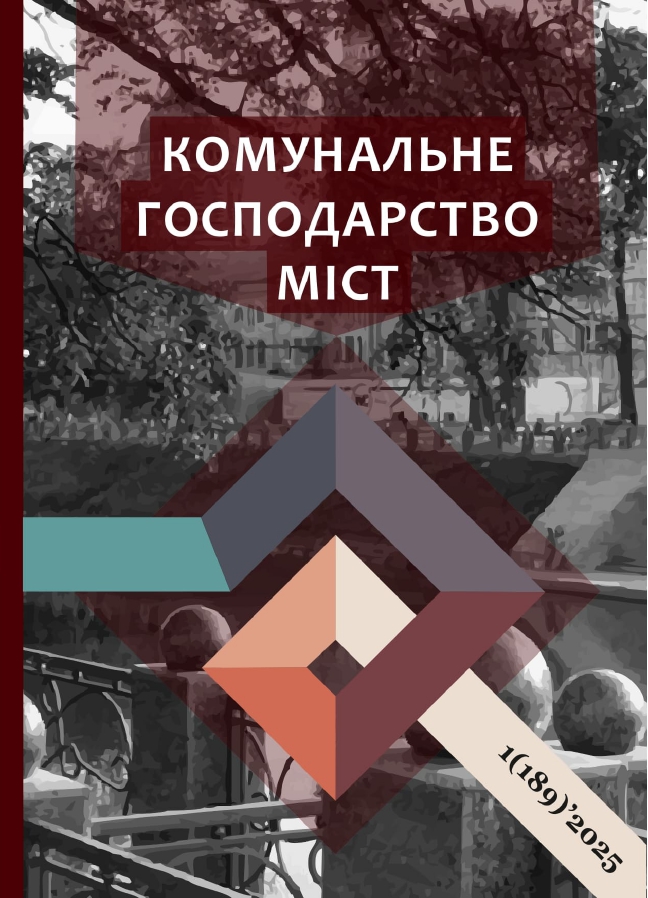CHEMICAL HAZARDS ANALYSIS AND PREVENTION OF THEIR IMPACT ON PRINTING INDUSTRY EMPLOYEES
DOI:
https://doi.org/10.33042/2522-1809-2025-1-189-404-409Keywords:
chemical hazard, workplace, printing production, printing inks, organic solvent, glueAbstract
The article is devoted to labour safety problems in printing production. Human resources are the basis of the effective functioning of any industry. Therefore, preserving the health and high efficiency of workers, and creating safe and comfortable conditions for a person's stay at the workplace is an urgent problem today. During their work, printing industry workers are exposed to the adverse effects of industrial hazards of various origins: chemical, physical, biological, and psychophysiological. The dominant dangerous factor is chemical, which accounts for about 50% of the dangers. Chemical hazardous factors include an increased level of dustiness and air pollution with harmful substances. Therefore, the goal of the work is a comprehensive analysis of printing production chemical hazards and the development of a program to prevent their negative impact on the health of workers in the industry. The main sources of chemical hazards in printing include publishing and printing materials that are used at various stages of printing production. Chemical hazards in printing are associated with the use of pre-press chemicals, printing inks, fountain solutions, organic solvents for cleaning and degreasing surfaces, adhesives and glues. Some substances included in these compounds can be carcinogens or have general toxic, irritating and sensitizing properties and negatively affect the skin, eyes, respiratory tract and internal organs of workers. It is possible to ensure safe working conditions for workers in the printing industry by developing a chemical safety program. This program must be organized and integrated into the overall safety management system at the workplace, which will contribute to its effective implementation. For the development, implementation and support of the specified program, employers must attract a sufficient amount of material and labour resources. A chemical safety program should include the following basic elements: risk assessment, safety measures, emergency preparedness, hazard communication, monitoring and review of safety measures adopted.
References
USA Printing Industry: Printing Industry Statistics in 2023. (2023). Retrieved from https://www.wtpbiz.com/ printing-industry-statistics-in-2023/.
Державна служба статистики України. Офіційний сайт. – Режим доступу: https://www.ukrstat.gov.ua.
Top Printing Industry Trends. (2023). Retrieved from https://www.linkedin.com/pulse/top-printing-industry-trends-hilal-hamza-.
Levenson, H., Parsons, J. (2018). Printing processes. In Introduction to Graphic Communication, 131–157. Retrieved from https://www.igcbook.com/wp-content/uploads/2018/04/IGC2-08-Print-Processes.pdf.
Туряб, Л. В. Аналіз виробничих ризик-факторів, що чинять несприятливу дію на працівників друкарських і післядрукарських цехів [Текст] / Л. В. Туряб, В. Ц. Жидецький, Л. Й. Кулік // Квалілогія книги. – 2018. – № 2(34). – С. 34–50.
Кузьмінов, Б. П. Хімічна небезпека у сучасному поліграфічному виробництві як гігієнічна проблема [Текст]: дис... д-ра мед. наук : 14.02.01 / Б. П. Кузьмінов ; [Львівський національний медичний ун-т ім. Данила Галицького]. – Львів, 2006. – 373 с.
Izdebska-Podsiadły, J. (2016). Podstawy BHP i analiza zagrożeń w przemyśle poligraficznym. Warszawa, 124. Retrieved from https://repo.pw.edu.pl/info/book/ WUTa69ad953078e41508ca67981b356ba22/.
Aydemir, С., Özsoy, S. A. (2020). Environmental impact of printing inks and printing process. Journal of Graphic Engineering and Design, 11(2), 11–17. DOI:10.24867/JGED-2020-2-011.
Chemical Safety in the Workplace – Guidance Notes on Chemical Safety in Printing Industry, published by the Labour Department. Retrieved from https://www.labour.gov.hk/eng/public/os/C/GN_Printing.pdf.
Othman, N., Lerk Lerk, L., Shreeshivadasan, Chelliapan, Mohammad, R., Ariff, N. M. & Nasri, N. S. (2017) Risk Assessment and Control Measures for the Printing Ink Production Process. International Journal of Civil Engineering and Technology, 8(10), 41–55. Retrieved from http://www.iaeme.com/IJCIET/issues.asp?JType=IJCIET&VType=8&IType=10.
Михайлова, Є. О. Тонер – одна із прихованих небезпек цифрового друку [Текст] / Є. О. Михайлова, М. О. Мороз : збірник тез І Всеукраїнської науково-практичної конференції, 21 березня 2024 р. – Харків : ХНЕУ ім. С. Кузнеця, 2024. – С. 299–301.
Downloads
Published
How to Cite
Issue
Section
License
The authors who publish in this collection agree with the following terms:
• The authors reserve the right to authorship of their work and give the magazine the right to first publish this work under the terms of license CC BY-NC-ND 4.0 (with the Designation of Authorship - Non-Commercial - Without Derivatives 4.0 International), which allows others to freely distribute the published work with a mandatory reference to the authors of the original work and the first publication of the work in this magazine.
• Authors have the right to make independent extra-exclusive work agreements in the form in which they were published by this magazine (for example, posting work in an electronic repository of an institution or publishing as part of a monograph), provided that the link to the first publication of the work in this journal is maintained. .
• Journal policy allows and encourages the publication of manuscripts on the Internet (for example, in institutions' repositories or on personal websites), both before the publication of this manuscript and during its editorial work, as it contributes to the emergence of productive scientific discussion and positively affects the efficiency and dynamics of the citation of the published work (see The Effect of Open Access).

